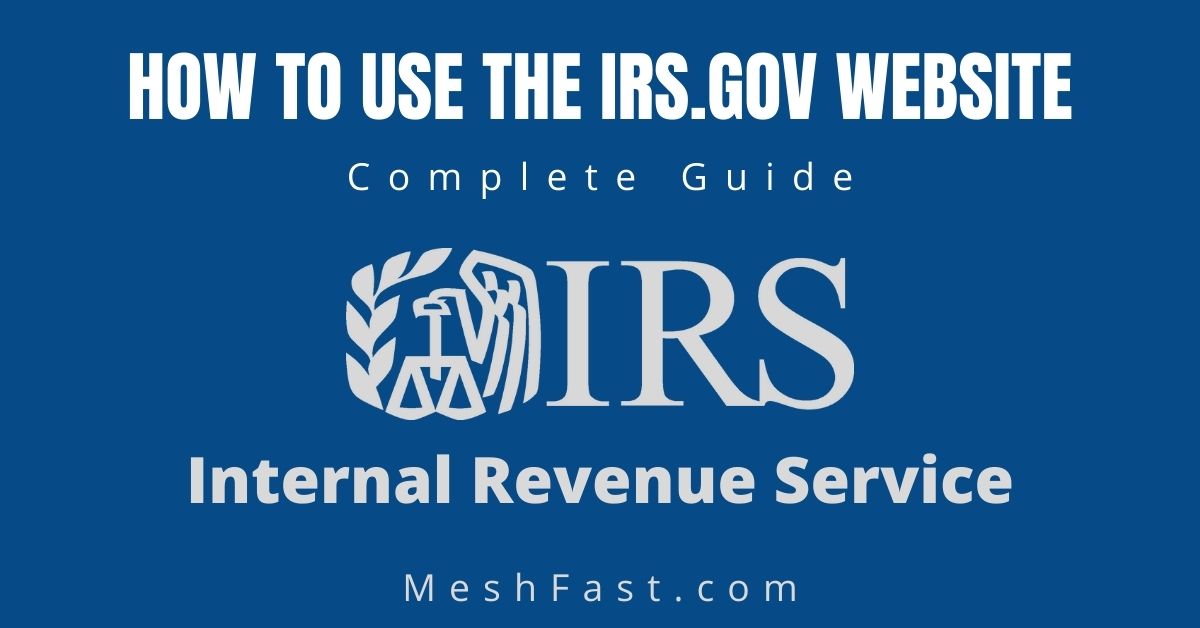If you are looking for How to Use the IRS.gov or ITS.gov Website, So you came to the right place. Here you can find the full information about Services offered on the IRS or its gov website
Table of Contents
What is IRS.gov?
The Internal Revenue Service (IRS) is the U.S. tax collection agency, and IRS.gov is the official site of that agency.
Individuals and businesses use the website to;
- File a tax return
- pay a balance owing
- check the status of a refund
- learn about credits and deductions
- access forms and instructions
Guide to Using the IRS.gov Website
This article will look at eight of the most typical actions people use the IRS.gov site to accomplish. Please study each of these in further depth, and always seek expert advice before making financial or tax-related decisions.
1. Check refund status
The ability to get tax credits is quite popular on this website, which isn’t surprising since most individuals want their taxes refunded. According to IRS.gov, approximately nine out of 10 refunds are paid in under 21 days, and a refund’s status is updated on the website once per day.
If you would like to receive your refund faster, consider enrolling in e-file and direct deposit, which will enable your refund to be transferred directly into your bank account.
2. View your account
This is another IRS.gov feature that a lot of people enjoy. Individual taxpayers can use this tool to see their payoff amount, tax year balance, payment history (up to 18 months), and more regarding their current tax year filing.
3. Access tools for tax professionals
The “e-Services” branch is a collection of internet-based applications that enable expert advisors to submit tax forms and other documents on behalf of their clients with the IRS. Tax consultants, mortgage experts, and reporting agents are some examples of professionals who may use the service. These services are only accessible to approved business partners of the Internal Revenue Service.
4. Check the status of an amended return
This service on the site may be used to examine the status of Form 1040X, an Amended U.S. Individual Income Tax Return. Remember that an amended return might take up to three weeks to appear in the online system. To view this data, simply input your social security number, zip code, and birthday.
5. Get your tax record/transcript
You may get your prior year’s Adjusted Gross Income (AGI) and Form 1040-series transcripts on IRS.gov in the online portal.
6. Make a tax payment
The two primary activities on this part of the site are paying taxes and checking your balance and payment history. You may pay your taxes by bank transfer for no cost, as well as use an authorized payment processor to do so, but using the latter option will incur a charge. If you want to see your current standing and payment history, all you have to do is go online.
7. Apply for an Employer Identification Number (EIN)
In this section of the website, all companies must have an Employer Identification Number (EIN) – also known as a Federal Tax Identification Number – and you can apply for it. The EIN application is available free of charge through the IRS, allowing you to obtain your EIN right away.
8. Access the IRS Foreign Financial Institutions (FFI) list
The Foreign Financial Institutions (FFI) list is a database of financial institutions that are FATCA-registered and have a worldwide intermediary identification number (GIIN). The tool lets you search and download data about such institutions.
Other Resources on IRS.gov
The eight resources listed above are most likely the most commonly used by individuals. However, there are numerous other tools to consider as well. Form 1040, tax returns for single and joint filers with no dependents (1040-EZ), the employee withdrawing allowance certificate (W-4), and a tax withholding calculator are among them.
There’s a lot of reading material out there, including the IRS Strategic Plan, tax reform bills, civil rights issues, the Taxpayer Bill of Rights, Freedom of Information Act releases, and other important public policy topics.
Tax Advice Notice
This article was made for educational reasons only and should not be used as tax or filing advice. Always talk to a professional tax consultant before making any financial decisions.


